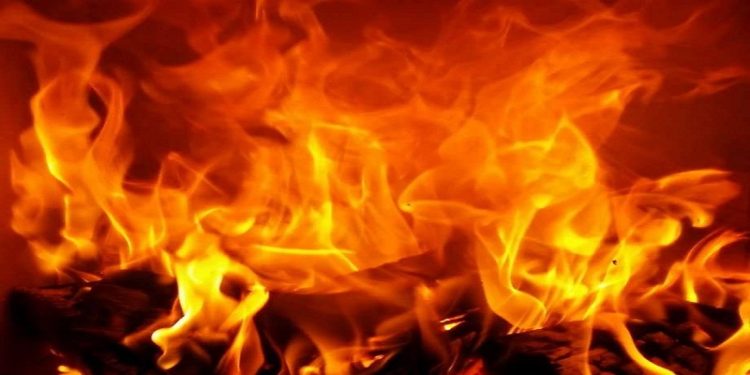Interesting hazards, part 2

Adventuring is a dangerous occupation. Not only are there deadly monsters to overcome, there are traps which can cost the characters time and energy to get around. Hazards are another danger intrinsic to adventuring. They are location-based threats that are usually inherent to the area where they are rather than having been constructed. Depending on how long the players need to put up with them, they can either be a minor inconvenience, or something more life threatening.
4. Difficult Terrain
- Jungle/ forests: there are roots and vines everywhere that can trip the unwary. Add to that unlevel ground, poisonous plants, virtually impassable crowded bushes, brambles, and trees, and there is a disaster waiting to happen. Also, in both terrains there’s the danger of quicksand to entrap the unwary.
- Collapsing buildings: may contain half fallen support beams, collapsing walls, building bricks or stones, bones, discarded clothing, broken furniture, and more. Such locations may be overgrown, abandoned because of a disaster, and/ or places where monsters have taken up residence. “The Last of Us” video game has a few good scenes which explore this. Stealth in such places becomes a problem because the debris on the floor makes noise as anything moves over it.
- Slippery Conditions can occur when there’s water, ice, grease, marbles or any other slippery substance is on the ground that the characters are walking on. Normally these types of hazards are a minor inconvenience like losing a turn or having to move more slowly, but couple them with a sharp drop off such as a cliff or an open sided bridge, and that can cause disaster for the characters thus exposed. Add in thin ice that may not support a character’s weight and you have a recipe for disaster where the other PCs need to rescue their friend – and risk getting pulled into the icy waters as well.
5. Earth Related Hazards
- Earthquakes are problematic because it can cause buildings to collapse, and whatever is therein to break. Even being on open ground doesn’t make something immune as it can still lose balance due to the shifting ground.
- Landslide/ avalanches can burry characters under tons of rock of snow. If not rescued quickly, such a situation may become fatal for them.
- Caves: damp, uneven floors and walls, bat guano, stalactites and stalagmites, sudden drops, and falling rocks are reasons why caving, unless the characters really know what they’re doing may be unsafe.
- Sinkhole: whether manmade from improper mining, unstable caves, leaky sewer pipes, or the digging from an Umber Hulk, these hazards can swallow buildings hole, cause road problems, and even down trees. These can strike without warning, but other times there may have been a depression there for years that no one thought twice about.
- Volcanic Eruption: in addition to the flowing lava, there’s poisonous gasses, rocks flung out with the force of an explosion and red-hot ash to contend with. As the lava cools, it may look safe to walk on, but the crust may only be a few millimeters thick, dropping anything unfortunate to be on it into the lava.
6. Weather Related Hazards
- Drought is a worrisome hazard because, if the characters not expecting it and rationing their water, the characters can come across a situation where the characters are facing dehydration. Add heat into the equation and they can be quickly facing heat exhaustion, or sunstroke.
- Slush is a frigidly cold, but not quite frozen substance which is half frozen water/ half ice, if trudged through can exhaust, slow and numb characters. If they go through it without waterproof, warm footwear, treat them as if they had exposed skin for as deep as they are submerged in it as long as they don’t change into dry clothing. Expect this hazard in very cold locations.
- Fog reduces visibility, making aiming at anything accurately almost impossible. Some fog can get so thick that characters can’t see the hand in front of their own faces. On unstable ground or ground that changes elevation quickly, can mean characters stumbling around in it may be in for a fall.
7. Making your own hazards.
Consider things like different gravity, different laws of physics, requirements for magic usage, and so on. The takeaways from dealing with making your own hazards are as follows:
- What is the major feature? It might be a storm, or razor sharp microscopic shards of glass floating in the air. Whatever the feature is, name it.
- Why is it dangerous? Even if one has Protection from fire doesn’t necessarily mean that the characters would be protected from a firestorm on the plane of fire. Just because a character is immune to external damage from slashing weapons, doesn’t mean that they can laugh at the shards of glass floating in the air. There should be an in-game reason to why it’s dangerous.
- Why is it here? If you as the DM can’t give an in-game logical answer to why the hazard is here, then it shouldn’t be there
- How to escape it? Hazards shouldn’t be inescapable death traps. There should be a way over, under, or around them. If there’s not, ask how yourself how deadly it should be.
- How much and what type of damage does it do?
Putting it all together
Example 1: Radiation Poisoning
Hazard Name: Radiation Poisoning
Why is it dangerous: It causes free radicals, i.e. it causes cellular damage over time.
Why is it here: There’s an abandoned uranium mine. There’s an old nuclear warhead. The ship runs on nuclear fuel and the engine is not working.
How to escape it: wear lead lined clothing. Limit exposure to it by entering and leaving the area. If someone is irradiated from another source, such as the Hulk, he might be able to totally ignore damage from radiation.
How much and what type of damage does it do: It does 1 point of con per two hours of exposure that can’t be healed in any way while in the field. If a character enters the area, leaving it before the two-hour window is up, no damage is accumulated, provided that an equal amount of time is spent outside the contaminated area.If you want it deadlier, reduce the time it’s safe to stay in the area, and increase the damage.
Example 2: Plains fire
Hazard Name: Plains fire
Why is it dangerous: It’s about to take out a small town. The players are going to be engulfed by the flames.
Why is it here: the plains got struck by lightning. Someone left a fire burning that got out of hand.
How to avoid it: Burn out a section for the players to stand in. Change the weather somehow. Summon water to pour onto it.
What how much and what type of damage does it do: It does 1d6 damage per round engulfed in the flames.
As you can see there are a variety of hazards that you can use in your game. These hazards may be only minor inconveniences if the PCs are powerful enough or something more life threatening if they stumble upon them unawares. As always, feel free to comment, like, and re-share!



